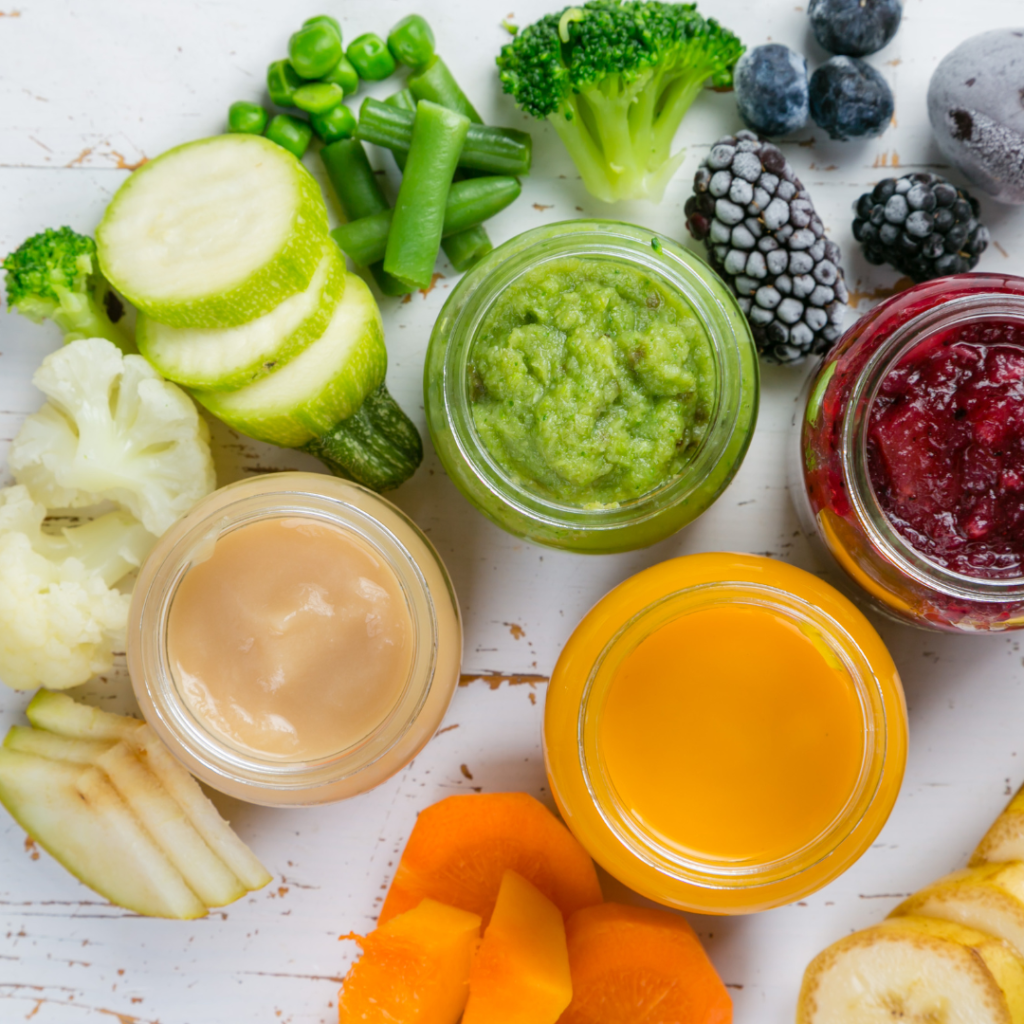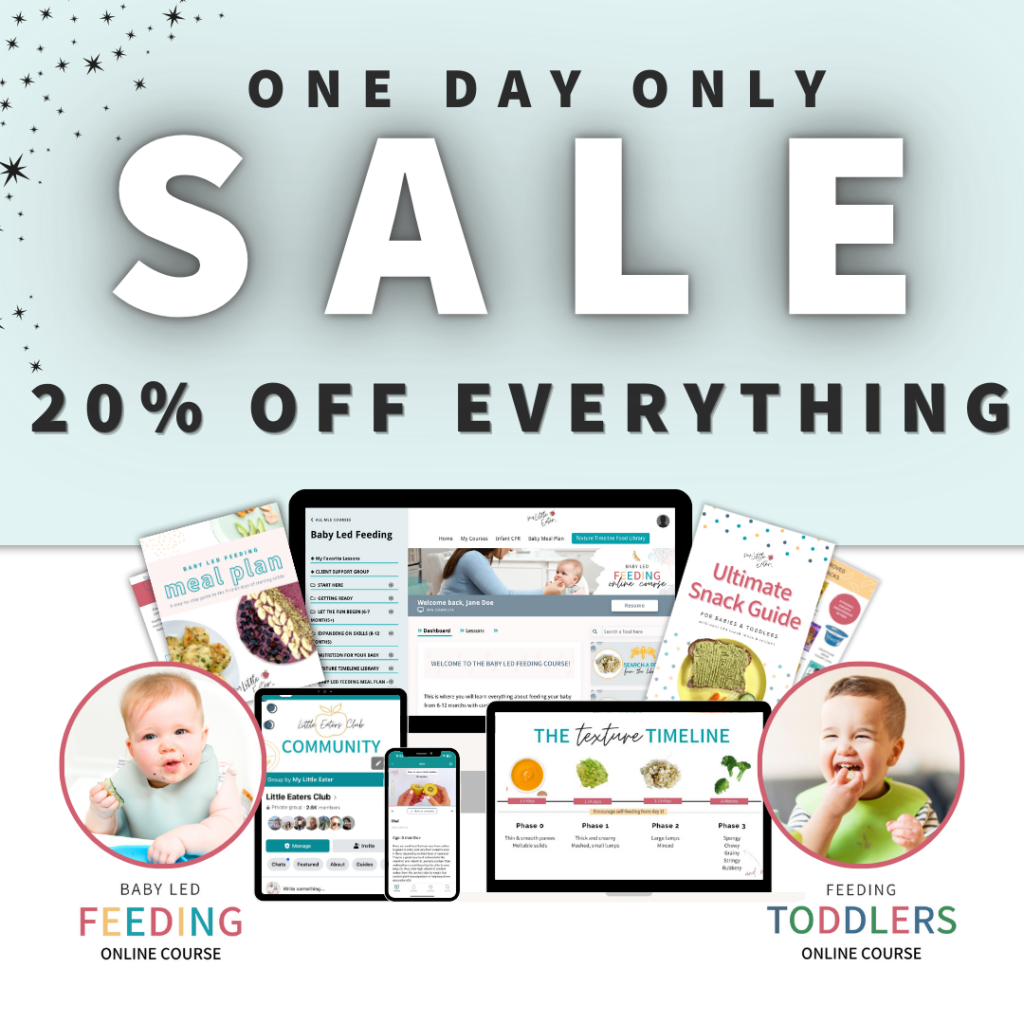This post may contain affiliate links, please view our disclosure policy for more details.
The holidays are an exciting time for all of us! This is especially true when you have a baby in the home who’s ready to start solids!
Most of us can’t wait to introduce them to the deliciousness that is Thanksgiving or Christmas dinner. In fact, it’s one of the most rewarding aspects of the fact that “baby eats what you eat” (a classic baby led weaning catchphrase!). If you’re offering your baby finger foods, they can easily experience the flavors and textures of the family holiday dinners, just like everyone else!
But, to keep the holidays happy, we’ll want to make sure that we’re being extra safe with what we offer your baby. We also want to keep nutritional needs (and restrictions) in mind the entire time. And that’s what we’re here to shed some light on today!
Table of Contents
PS. If you’re choosing to start with purees – don’t worry! Your baby can enjoy the holiday meal as well. Head over to my blog on how to make homemade purees for instructions on turning any traditional holiday food into a puree to feed baby or preload onto a spoon for them to self-feed.
Now, generally speaking, you really can serve your baby what you’re eating, assuming you’re eating unprocessed and healthy food yourself! Since the holidays often mean indulging in food that isn’t always available year-round, there may be some not-so-healthy, or processed, solid foods on the table. The good news is that it’s easy to find lots of good options to serve your baby from the typical spread that’s available during the holiday season, with little to no modifications.
If you’d prefer to listen to the info while you multi-task – we get it! Download the podcast episode below to get all the details you need.
To learn more about how to start solids with your baby, get access to my signature Texture Timeline™ for gradually introducing your baby to more and more advanced textures, and to be able to search our food video library to see exactly how to serve foods based on the phases of the timeline…enroll in our Baby Led Feeding online course now!
Whether you’re starting with purees, finger foods, a combination – or you have no idea – this course will walk you through the process step by step. You’ll finish feeling confident in how to feed your baby! Plus, you’ll have lifetime access to support straight from the My Little Eater team and you’ll be able to search for any food in the video library to make food prep for your baby simple and safe.
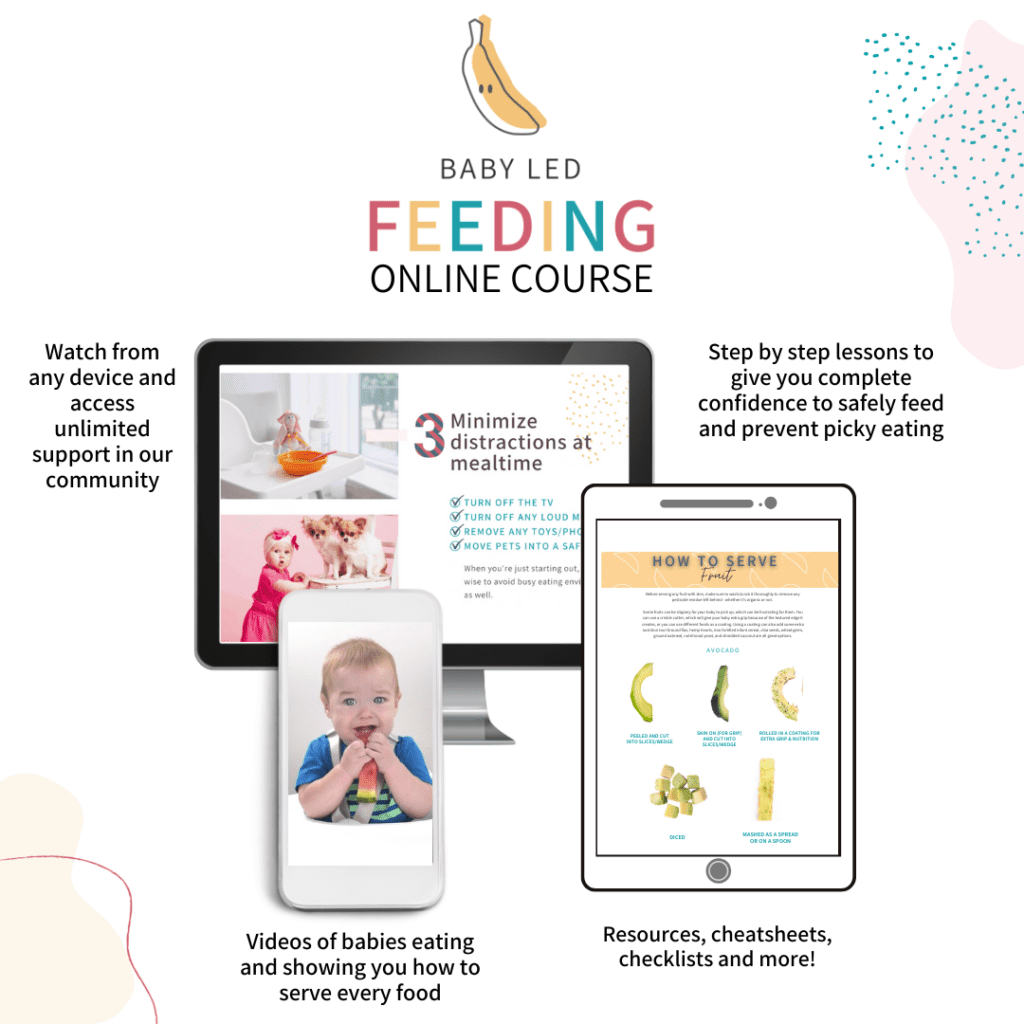
Traditional holiday foods as finger foods for baby led weaning
Turkey
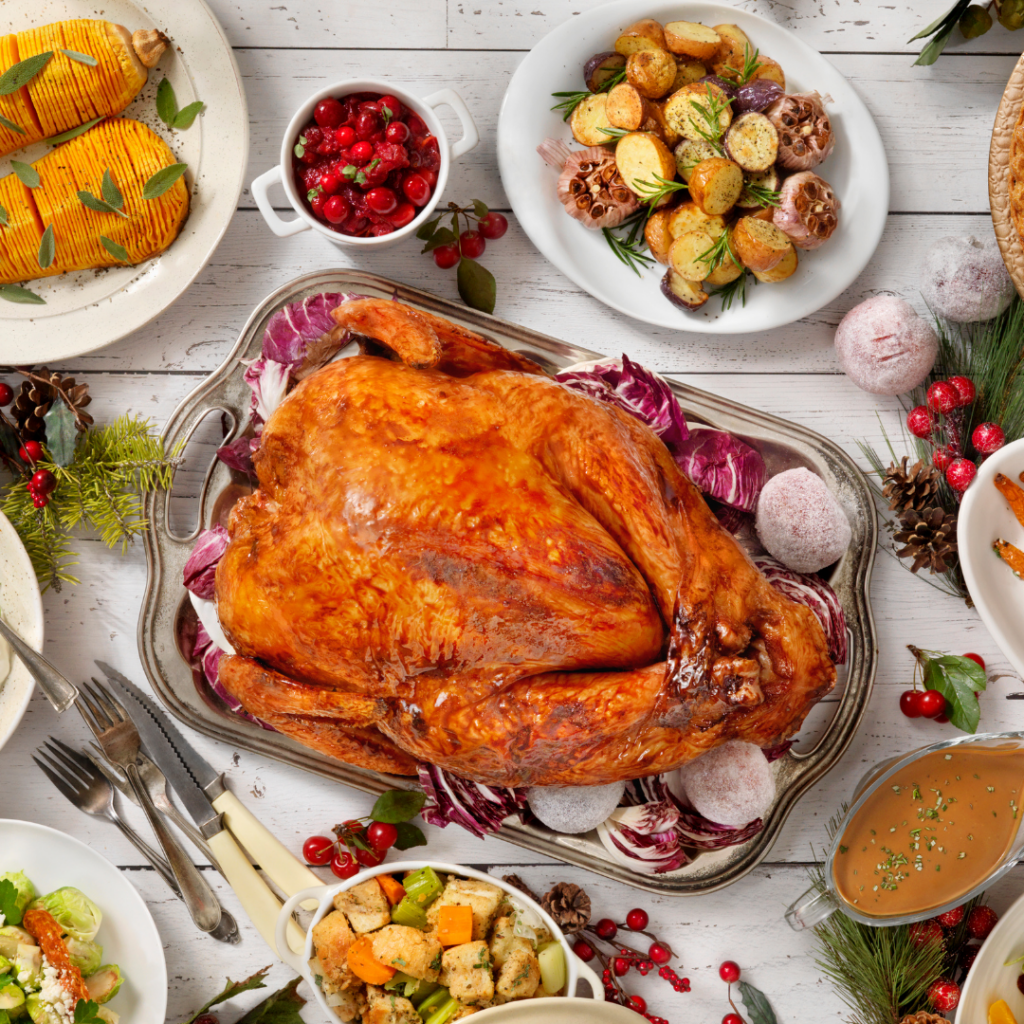
Meat, like turkey, is one of the best options for your baby. It’s high in iron, which is important to include in most meals for your baby. As long as the turkey isn’t too overdone, it’s typically moist and juicy as well which makes it safer to serve to your baby.
A lot of times, the turkey is brined and has absorbed a lot of salt, which obviously isn’t ideal for your baby on a daily basis. However, for one special meal, a bit of brined turkey isn’t going to affect them. We do recommend removing the skin as that contains a lot of salt (plus, it’s a choking hazard for babies!)
It’s best to choose a piece of dark meat as it’s more moist and contains the highest amount of iron. You can pull off long pieces, about the size of your finger (along the grain is best), and serve it directly to your baby that way as a finger food.
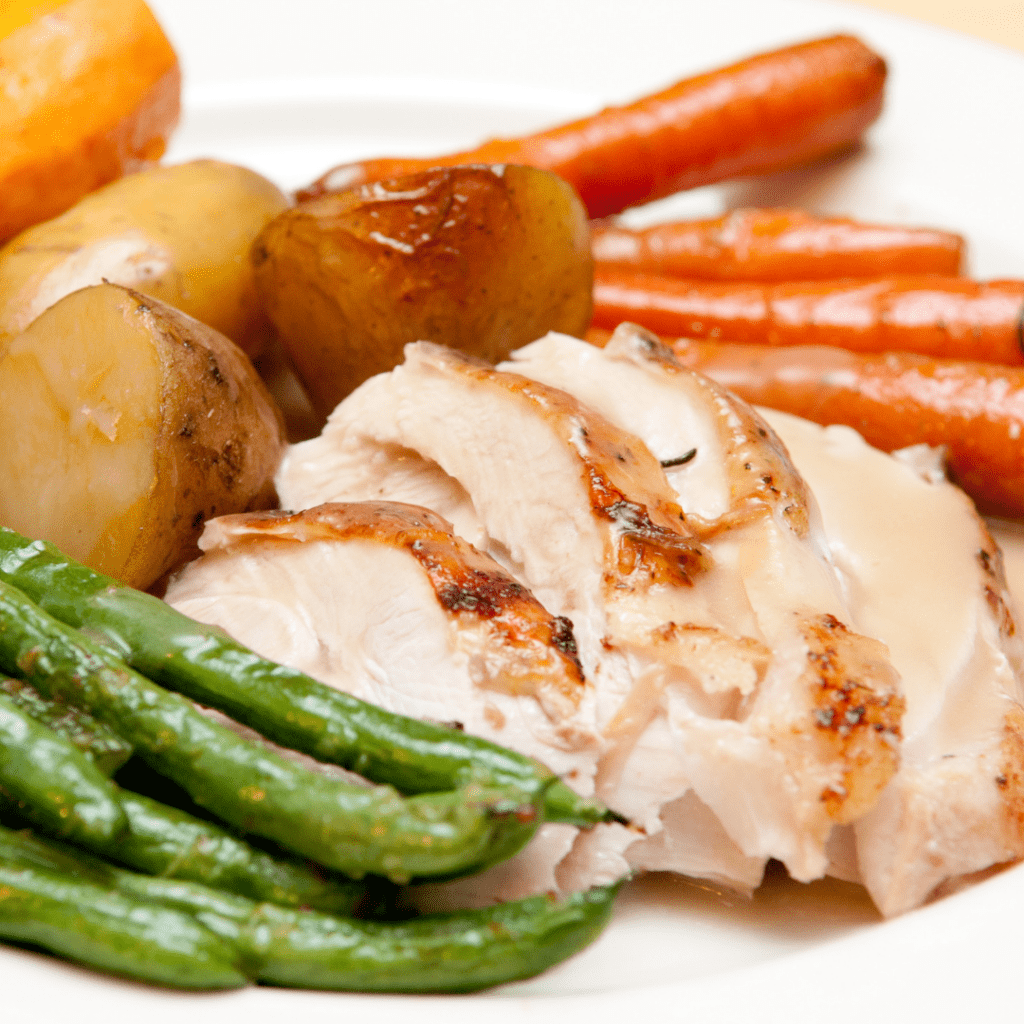
You can also serve a turkey drumstick directly to your baby (oh trust me, this is safe AND fun!). It makes it so easy for your baby to hold and suck off lots of high-iron juice. There’s no choking risk with a big bone like this, believe it or not, as there’s no way for them to break off the bone and accidentally choke on it!
Watch the video below to see exactly how we recommend serving turkey to babies. An entire library of videos like these with additional info on how to serve, allergies, nutrition, etc. is available exclusively inside the Baby Led Feeding online course.
Ham
An uncured freshly cooked ham is also a high-iron option that can be a good choice for feeding your baby. However, be careful of cured hams that are prepared in a brine, or that are smoked. The salt content of cured hams can be pretty high, and smoking can mean added chemicals like nitrates or nitrites are present.
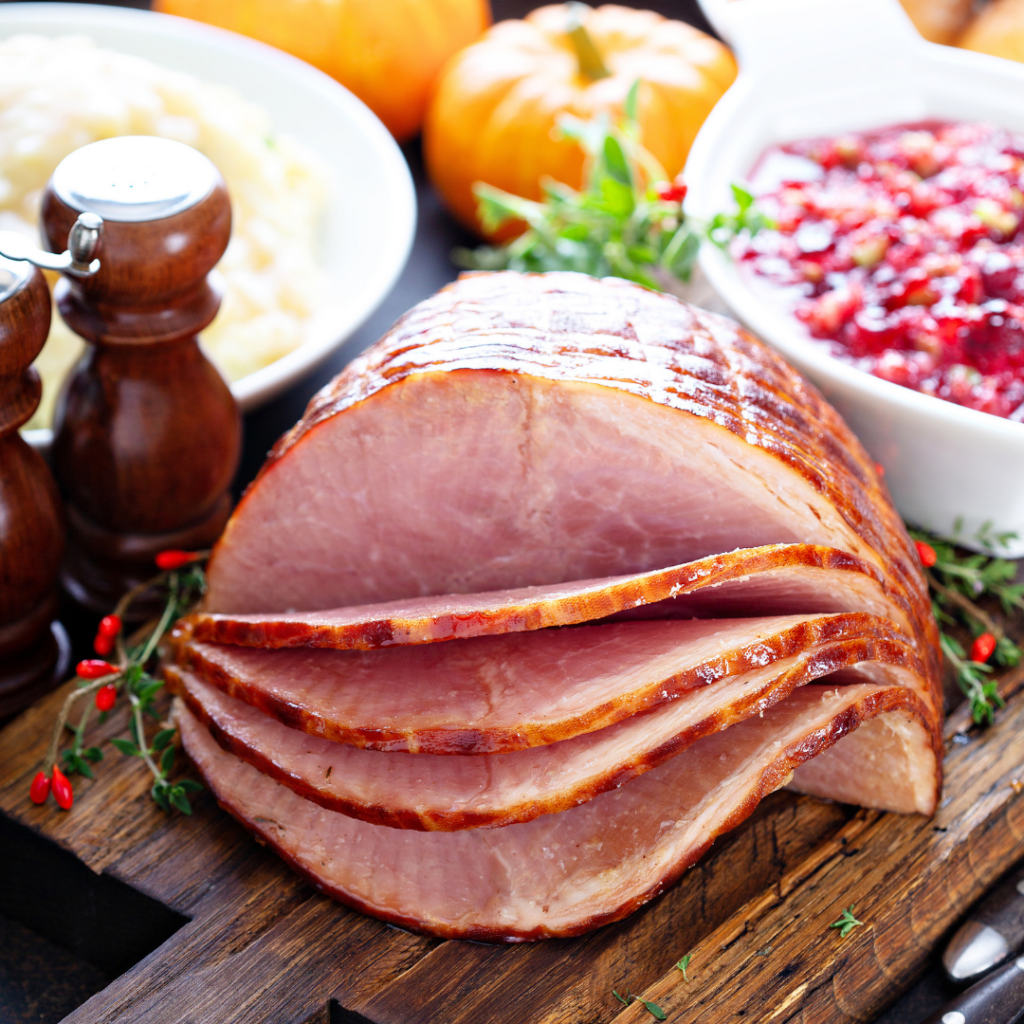
A piece of plain ham (even if cured) and served in a long finger shape isn’t going to harm your baby in small quantities, but just be careful not to go overboard. If there are any bones in the ham, make sure they’re completely removed before serving it to your baby.
Another thing to be very careful of is the glaze that is put on the ham. Besides the fact that it’s usually high in sugar, most of the time there’s honey in the glaze. Honey should be avoided completely for all babies (pasteurized or not) before the age of 1. If there’s honey in the glaze, removing the outer portion isn’t enough to remove the risk, we recommend just avoiding the ham completely.
Gravy
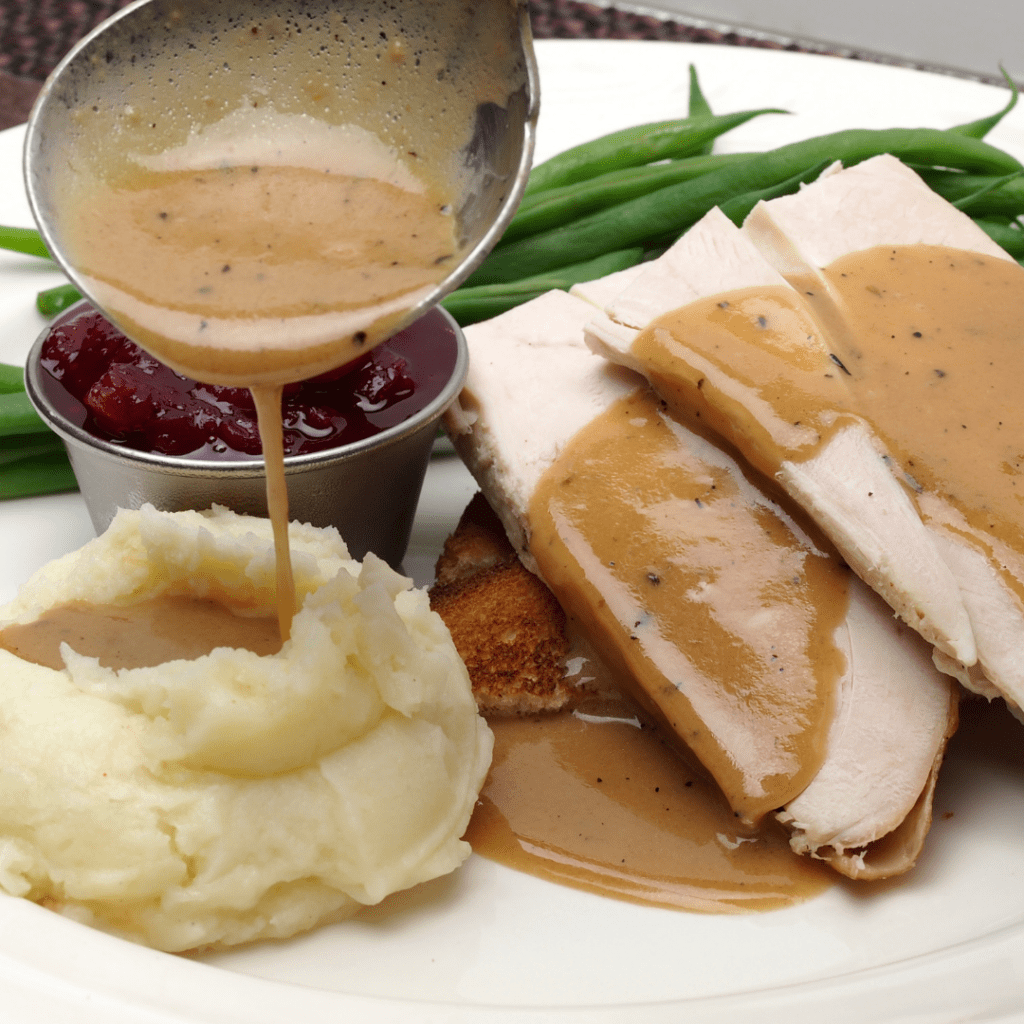
Gravy and other sauces that keep the meat moist are typically recommended to increase the palatability and moisture of the meat for your baby. However, a lot of times gravy is packaged and processed with high amounts of salt. Combining that with the rest of the meal, which already has higher than usual amounts of salt for a baby, can be too much. We recommend avoiding the packaged or purchased gravy altogether.
Homemade gravy options are going to be better for baby led weaning. Set aside some gravy for your baby before any salt is added to it, or even simply set aside a bit of the turkey drippings before using them to make the gravy. These work perfectly to douse the turkey meat in to ensure it’s moist enough for your baby to safely eat. This is also a high-fat option making it a healthy choice to offer baby.
Potatoes
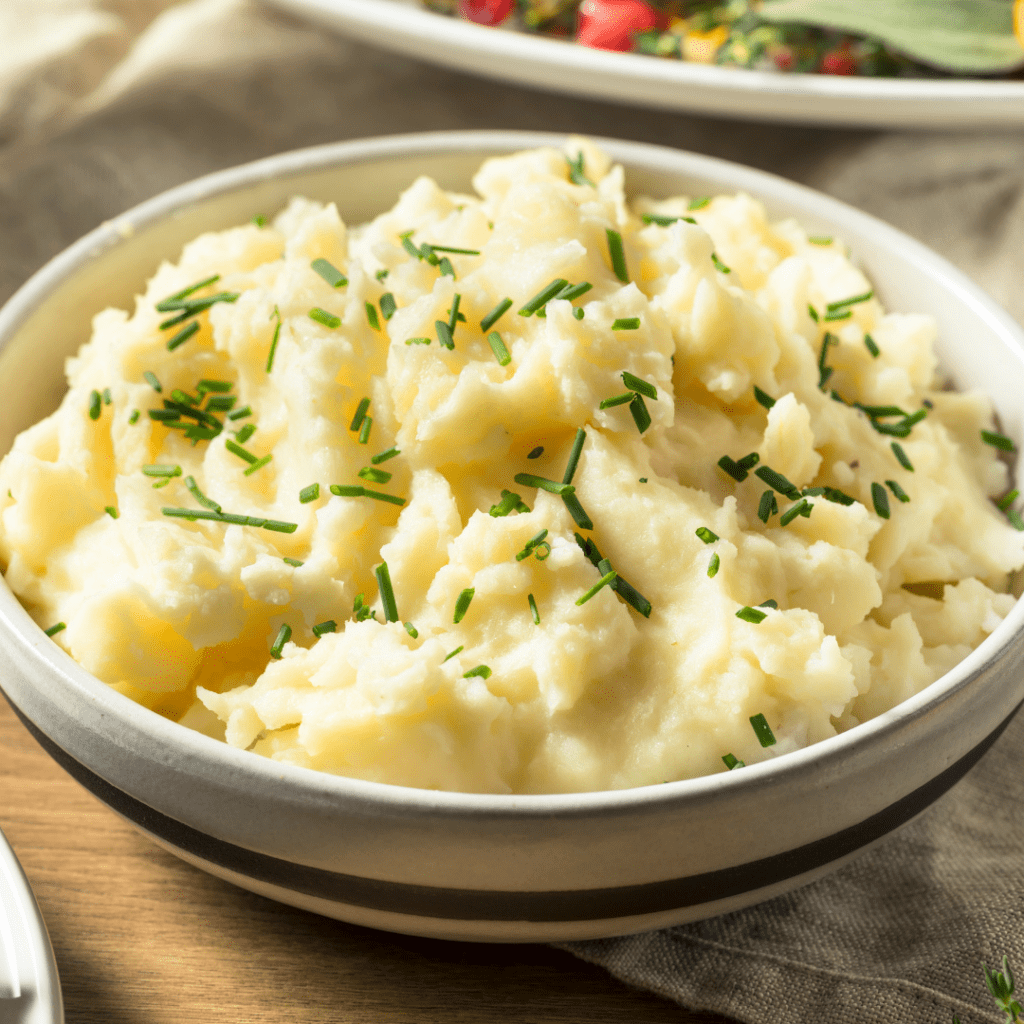
Potatoes are one of the most popular first foods for baby led weaning! Whether served as mashed potatoes or roasted in long or large, round pieces as finger foods, both are great ways for your baby to enjoy them.
Depending on your traditions, you may have white or yellow mashed potatoes or even sweet potatoes on the menu – all are fine for baby led weaning! To serve your baby potatoes, put them right on your baby’s high chair tray, or offer them on a preloaded spoon like the Num Num Gootensil if mashed.

Don’t be afraid of strong flavors for baby led feeding! It’s actually important to offer spices for exposure right from the beginning. So don’t worry about any seasonings or herbs that may be in the potatoes (like garlic, dill, rosemary, sage, parsley, thyme, etc). These all add to the flavor experience for your baby (which helps prevent picky eating!).
Safety Note: If the mashed potatoes or sweet potatoes have bits of skin mixed in (or still on them after cooking), you will want to be careful of these pieces and remove them. The skin is considered a choking hazard at this age.
Vegetables
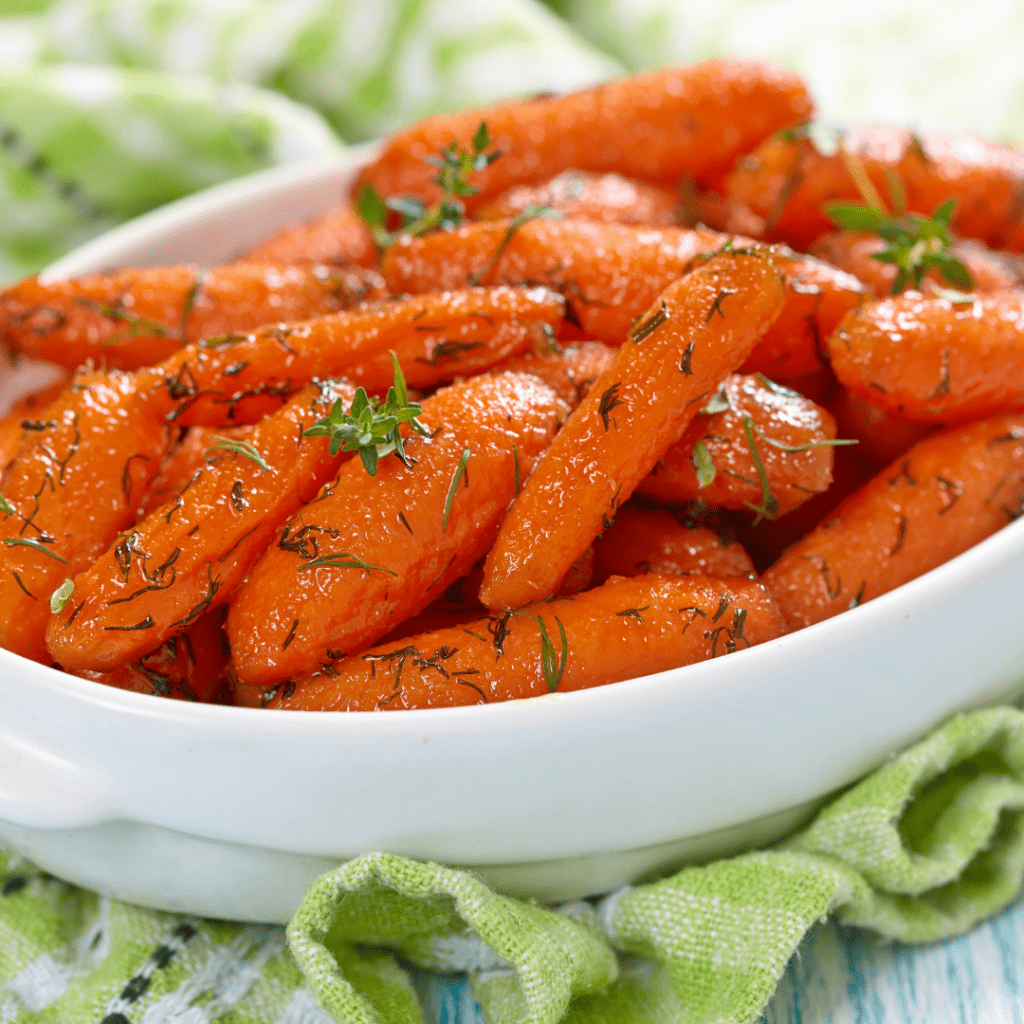
All vegetables are perfectly fine as long as they’re cooked (roasted, steamed, etc.). Carrots, green beans, broccoli, and parsnips are all nutrient-rich options that can be served as finger foods in long pieces for baby led weaning.
Vegetables should be cooked long enough to pass the squish test*. A dish like a green bean casserole is an especially great option for your baby, as it’s already in a BLW-friendly shape and texture. Again, be careful of any glazes that may contain honey (usually dishes like cooked brussel sprouts or carrots are ones to watch out for).
You should avoid raw veggies (like in a veggie and dip platter) unless the veggie is tomatoes or the inner portion of cucumber, as most raw veggies are considered choking hazards for your baby.
Watch the video below to learn how to safely serve green beans to your baby led weaning baby. Remember, to get complete access to all of our how to serve videos in an easy-to-search library, enroll in the Baby Led Feeding online course now!
*What is the squish test?
Cranberry sauce
Cranberry sauce is a great way to add moisture and sweetness to the meal, which again, is something that makes eating a lot easier for babies and adults alike!
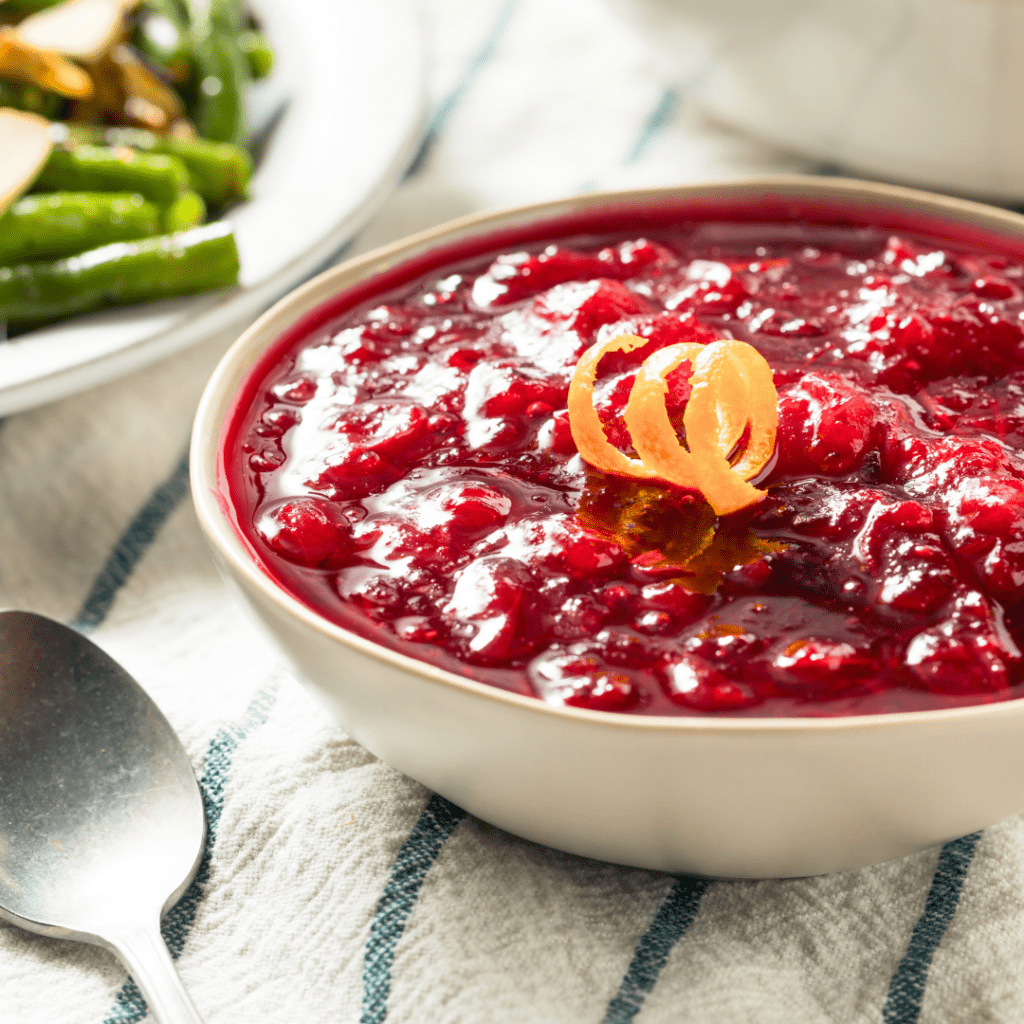
We recommend avoiding canned cranberry sauce for the fact that it contains highly concentrated amounts of added sugar. A little bit won’t be the end of the world, but don’t make it a big part of their meal.
Luckily for you, we have the best low-sugar cranberry sauce recipe at the end of this blog! You don’t have to make it separately for your baby on Christmas day, the entire family is sure to love it too.
Always make sure that the whole cranberries are mashed before serving the cranberry sauce to your baby to decrease choking risk.
Bread stuffing
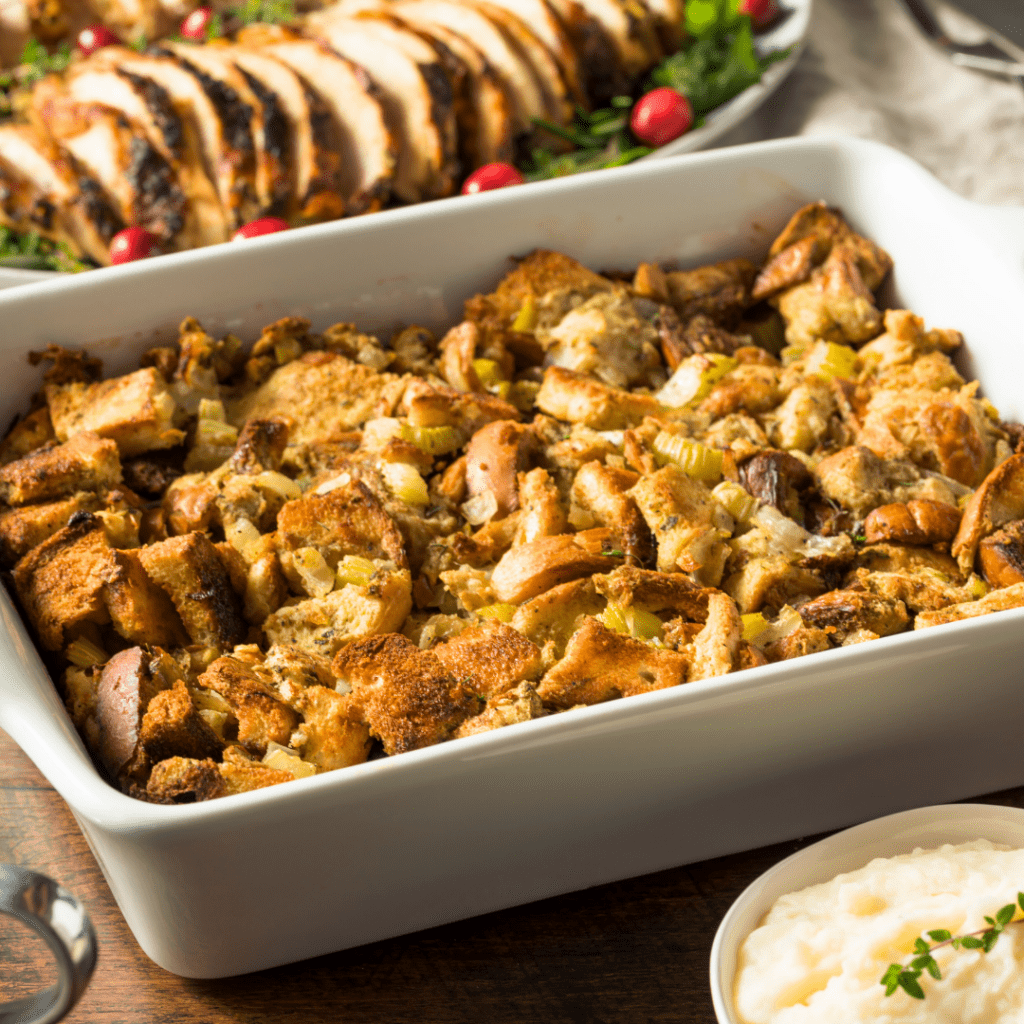
Homemade bread stuffing is a great choice that packs all sorts of holiday flavors and is wonderful for your baby to explore. Though it’s soft, the bread is not usually too gummy, because it’s baked, which makes it a safer choice. Just make sure to offer a little bit at a time to avoid overstuffing, and difficulty maneuvering the bread around in the mouth!
Cheese or charcuterie board
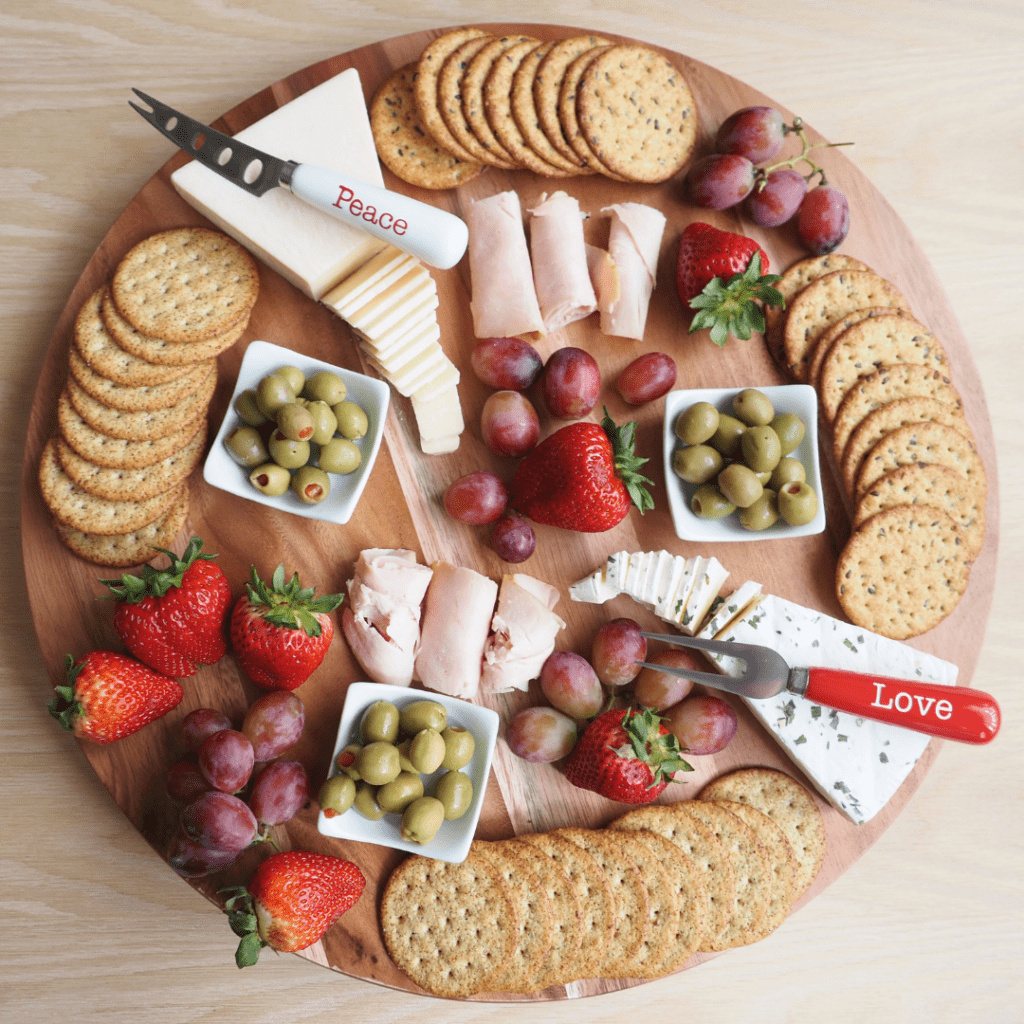
Cheese is perfectly appropriate for your little one, including soft cheeses like goat or blue cheese (as long as they’re all pasteurized). For more information on which cheeses we recommend for babies, read all about “Cheese for Baby Led Weaning”, here. Additionally, you can watch the video below for ways to serve cheese safely for babies as it can be a choking hazard if served incorrectly.
When it comes to other options on a traditional charcuterie board, you’ll want to avoid processed meat, like prosciutto and salami as it’s not the best choice for babies. Apart from being high in salt, these also typically contain nitrites and nitrates which we want to avoid. You’ll also want to completely avoid any nuts or chocolate on a cheese board. Whole nuts are a choking hazard for young babies and toddlers, and chocolate is an added sugar (that also has caffeine) that babies just don’t need.
Olives are another typical food found on charcuterie boards and although they’re high in salt, you can still offer a bit to your baby. You’ll want to make sure you serve them quartered and pitted because they are a choking hazard otherwise. The strong flavor is a good one to expose your baby to, and when eaten in moderation the added salt isn’t something to worry about for this one day.
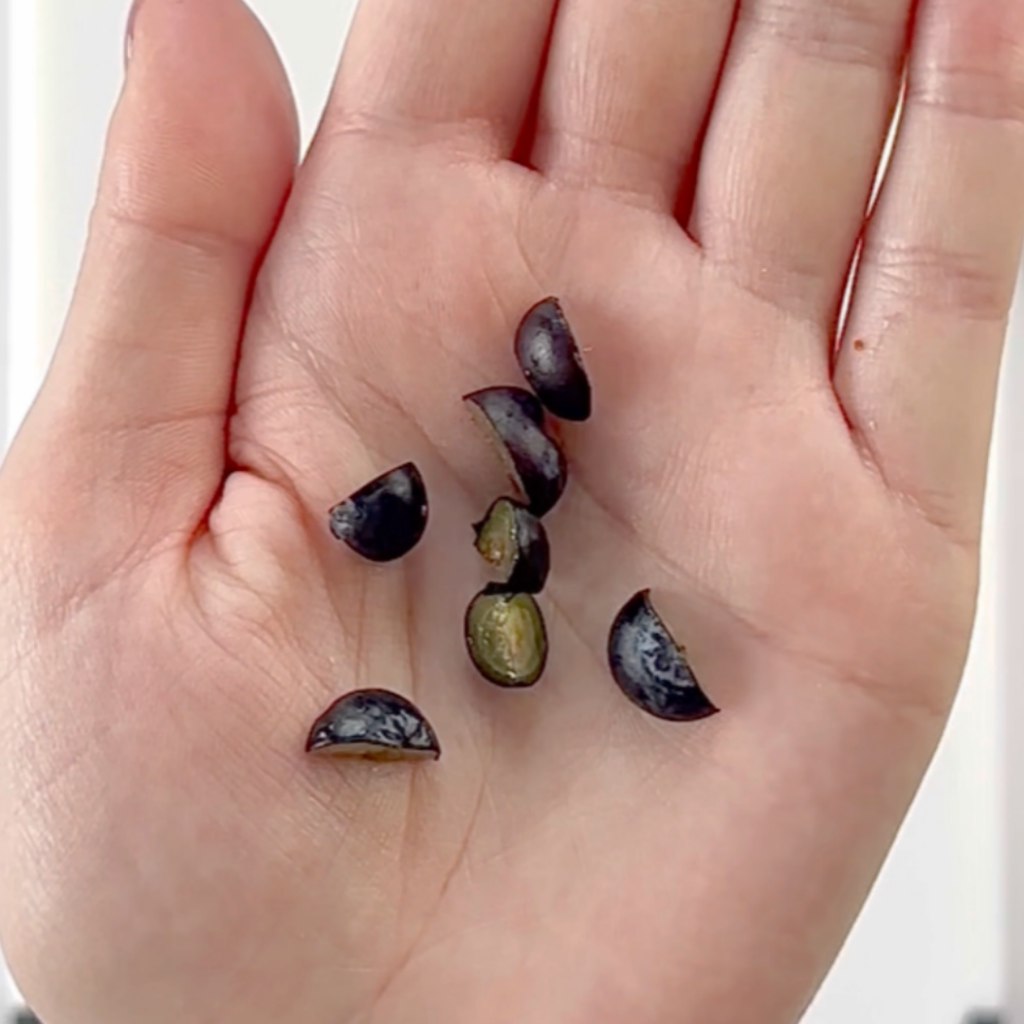
Fruits, like berries and grapes, are also great options to offer your baby. You will want to be sure that all grapes are quartered, as well as blueberries and blackberries. Raspberries can be flattened before serving (as can smaller blueberries) and strawberries can be served whole, provided they’re ripe enough to pass the squish test.
Finally, if you’re not sure whether the crackers on the charcuterie board are safe for your baby, check out my free cracker guide for which brands and types are safe for what age!
Desserts
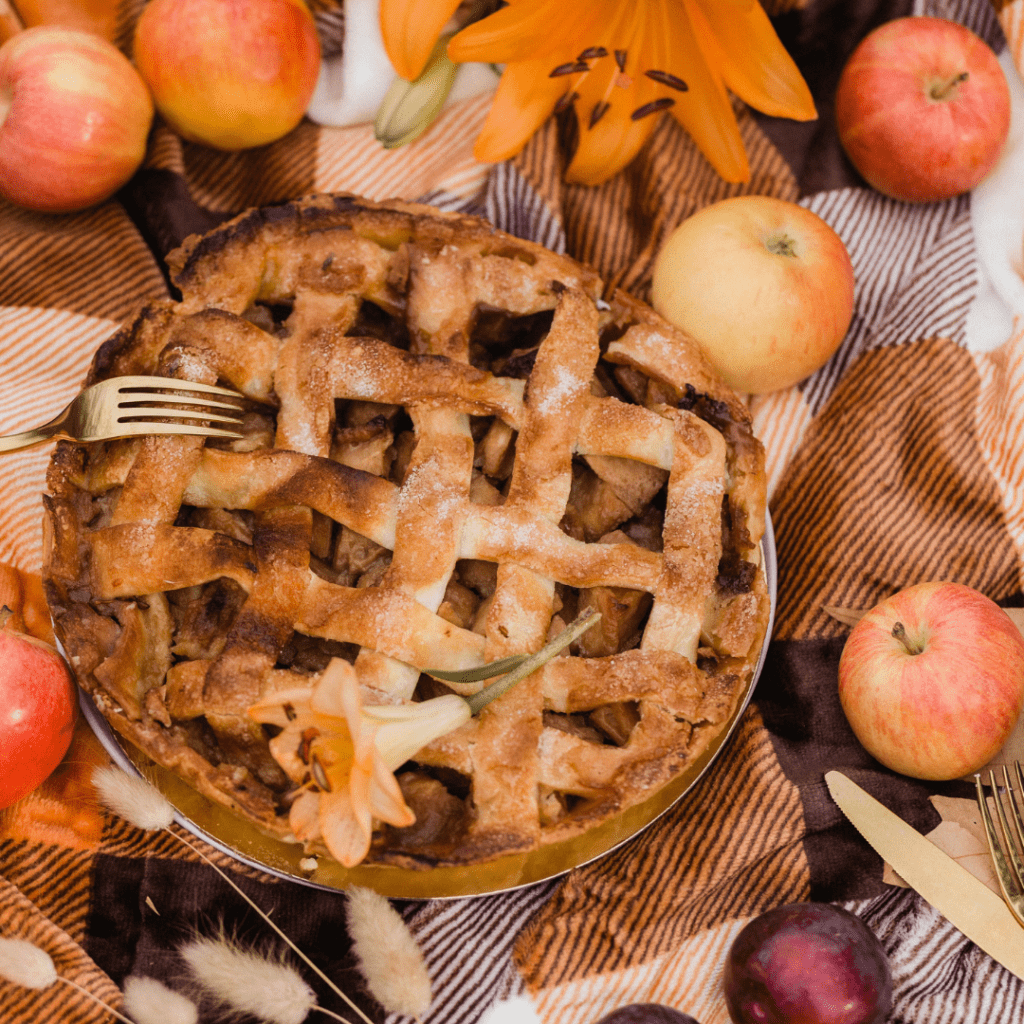
Things like pumpkin pie, sweet potato pie, and apple pie may be staple holiday desserts for everyone, but your baby doesn’t know that yet. They of course contain added sugar that is not healthy for your baby to be getting. They also won’t be yearning for a taste of dessert, as long as they’ve never had it before, and so don’t know what they’re missing. Read more about our perspective on this in our blog “The scoop on added sugar for babies”.
That being said, healthy eating also means that you can enjoy these “sometimes” foods without stressing too much or letting them consume you. Perhaps your choice may be that you serve a small amount to allow them to get the full experience that the holidays bring. This choice is always up to you, and never let anyone make you feel like you should question yourself. Remembering that this is a once-or-twice-a-year event, may put things into perspective.
If you’re looking for a tasty dessert to offer at holiday events with no added sugar, check out our Coconut Yogurt Banana Boat Recipe!
Four tips for successful baby led weaning holiday meals

1. Do not introduce first foods with the whole family present
Using a large family event, like a holiday meal, as the very first time your baby starts solids is not something we’d recommend. There are so many distractions…people talking, music playing, kids screaming, etc. and everyone will be staring at your baby while they eat – guaranteed.
When you start baby led feeding for the first time, you don’t want your baby to be overstimulated. You don’t want them to be distracted by their environment. And trust me, you don’t want to hear the opinions of all your family members!
This is a new experience for your baby and it really does require some concentration. Having your baby be focused on what they’re doing is an important part of them showing interest and keeping the experience as safe as possible.
Our recommendation is to practice a few times leading up to the big holiday meal if your baby is ready to start. This way they’ll know what to expect when you put them in their high chair, and you’ll have a bit more confidence in knowing what to do yourself as well.
If your baby is not quite ready in the weeks leading up to the event to get any practice in, don’t let the first meal happen at the event. Do breakfast before you go, or simply wait one more day. They only need one meal per day to start so don’t worry if they don’t eat during the family dinner.
2. Prep your family and friends
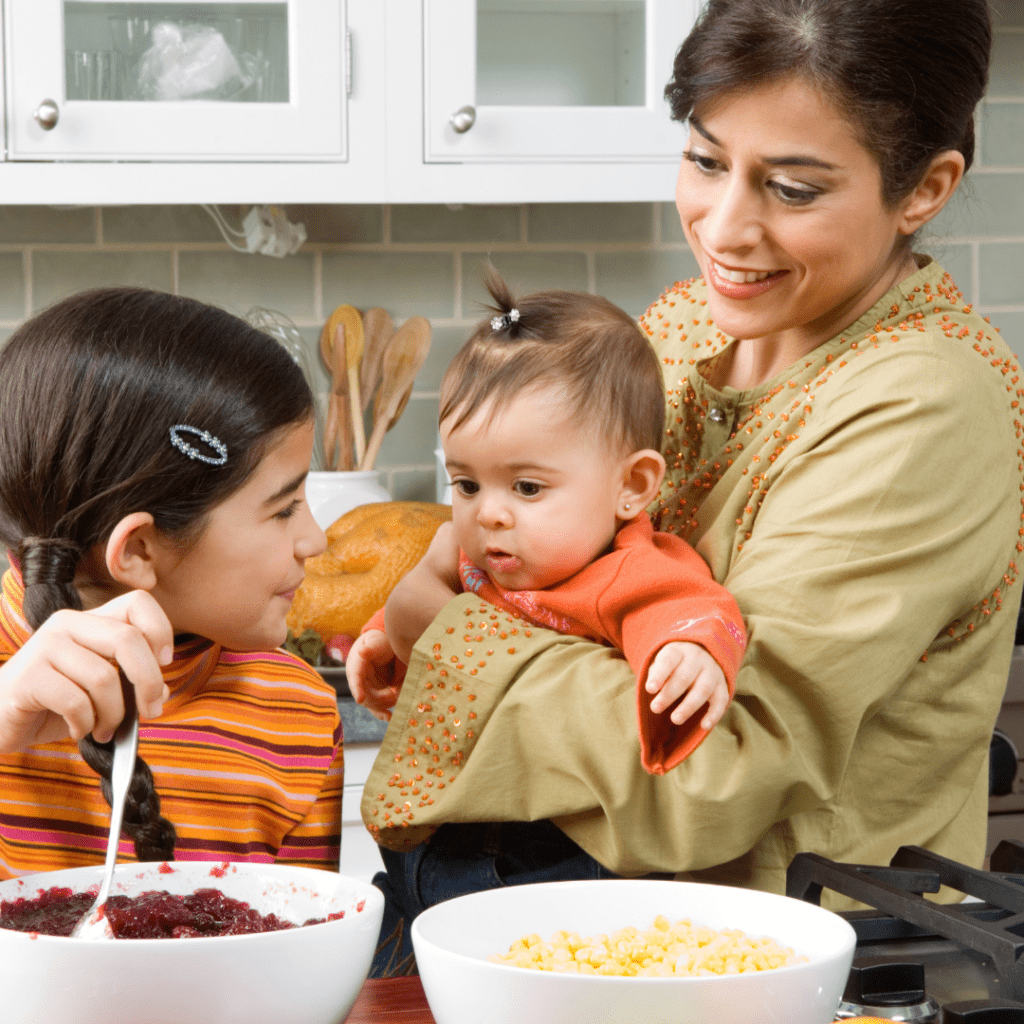
Let those who will be there know that your baby is self-feeding and what that entails. Explain to them what it means and ask them not to be alarmed by the process or intervene in any way. Never let a family member try to feed your baby a piece of finger food themselves by putting it directly into their mouth. This can increase their risk of choking. Explain that you’ve done your research (and hopefully taken my online course!) and this method is safe when your baby is able to do it themselves.
We also recommend giving them a heads-up about gagging. Let them know that gagging is expected and is not the same as choking. Explain that the best thing to do if/when it happens is to not make a big deal about it. If you’d like some tips on how to approach these conversations, check out our blog on managing “helpful” tips from families over the holidays.
3. Don't forget your feeding accessories!
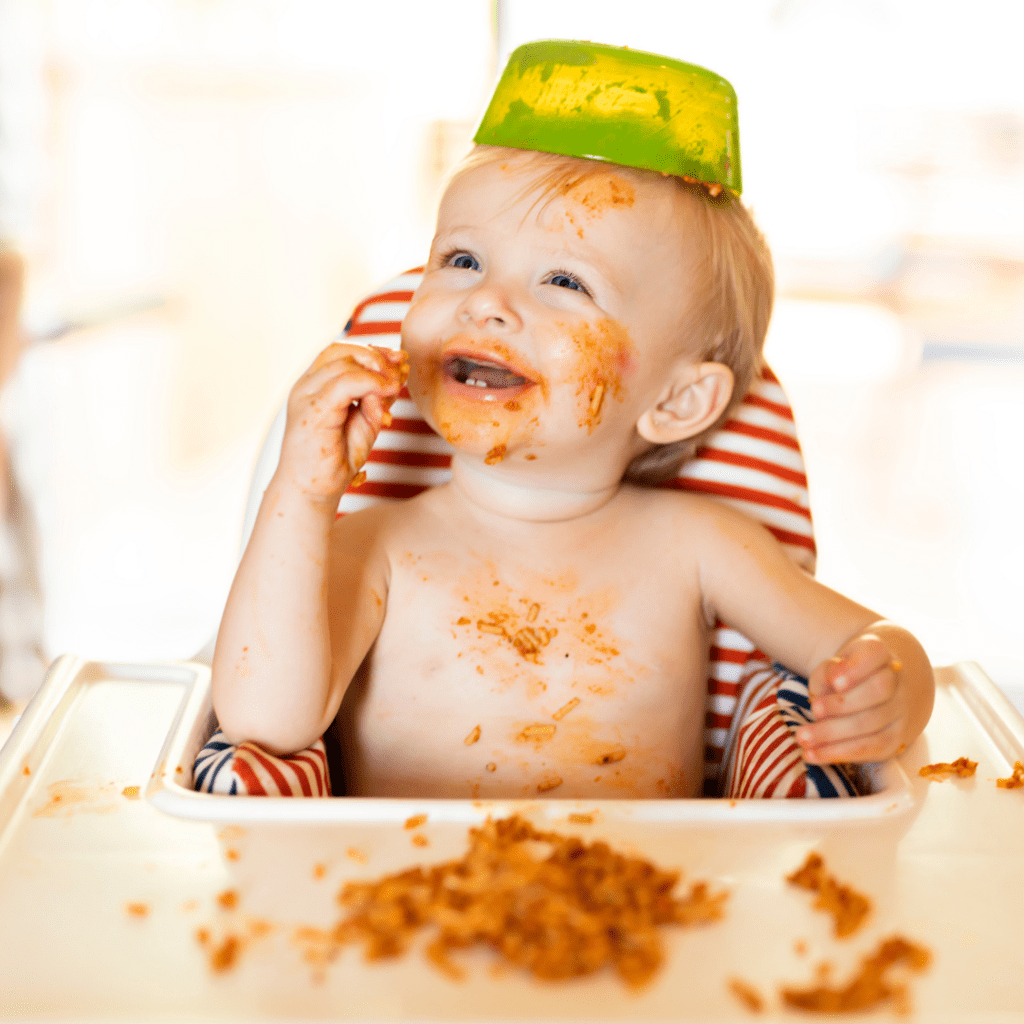
If you aren’t the one hosting the family dinner, make sure you bring everything you’ll need to feed your baby. We recommend the following list:
- a portable highchair (the liuliuby On-The-Go Harness Seat
is a good option!) - a pre-spoon like the Num Num Gootensil
- a long-sleeve bib and splat mat
- a cup for drinking
- a suction mat like the EzPz portable placemat
- baby wipes for easy clean up after the meal
Technically, these are all optional, but they will make it easier for you to set your baby up comfortably to enjoy the meal (and help manage the mess afterward).
4. Keep your expectations low
Remember that your baby’s milk, sleep, and eating schedule may not work with your family’s holiday dinner schedule. Oftentimes, dinners are late and your baby may not be hungry when everyone else is finally ready to eat. Avoid holding off on their feeding schedule to make it work with the rest of the family. If you need to feed them before everyone else eats – go for it!
If your baby is awake during meal time but isn’t hungry, we still recommend pulling the highchair up nice and close to the dinner table to include them in the meal! You could even offer them a teether or their spoon to play with and gum on while everyone else eats!

This is your baby’s first Christmas…Thanksgiving…Hannukah…etc. – soak up the memories, include them in the joy, and don’t overthink everything else!
For all the info you need on starting solids, including access to my Texture Timeline™ Food Library, enroll in my Baby Led Feeding online course now! You can search the video library to find out how to serve foods safely to your baby based on the phase of the timeline you’re in. Plus, start solids where you and baby are ready…purees, finger foods, a combination…and gradually advance from there.
With the custom framework exclusively available in our Baby Led Feeding online course, you can feel confident knowing you’re following your baby’s lead and doing what is right for your baby and family as a whole. No pressure, no judgment, just ongoing support and encouragement from day one.
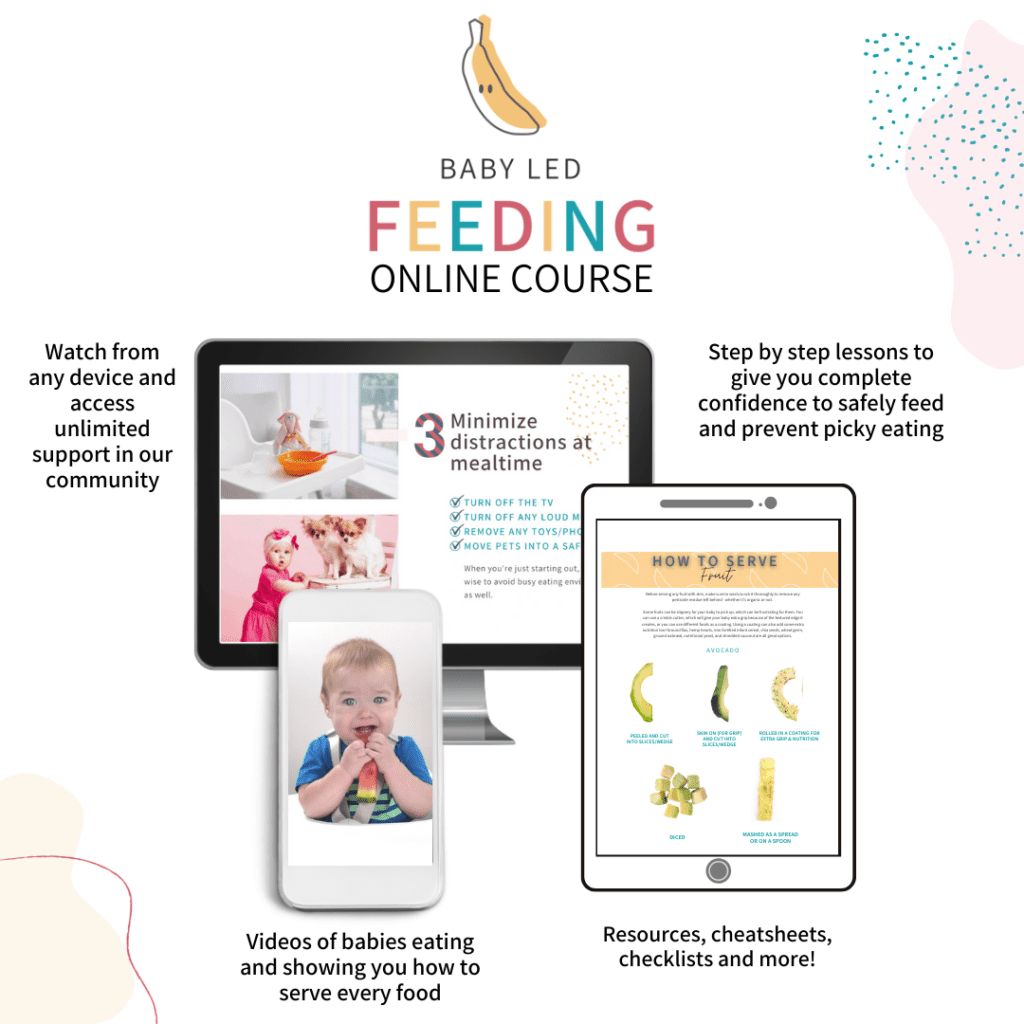
Low-sugar cranberry sauce
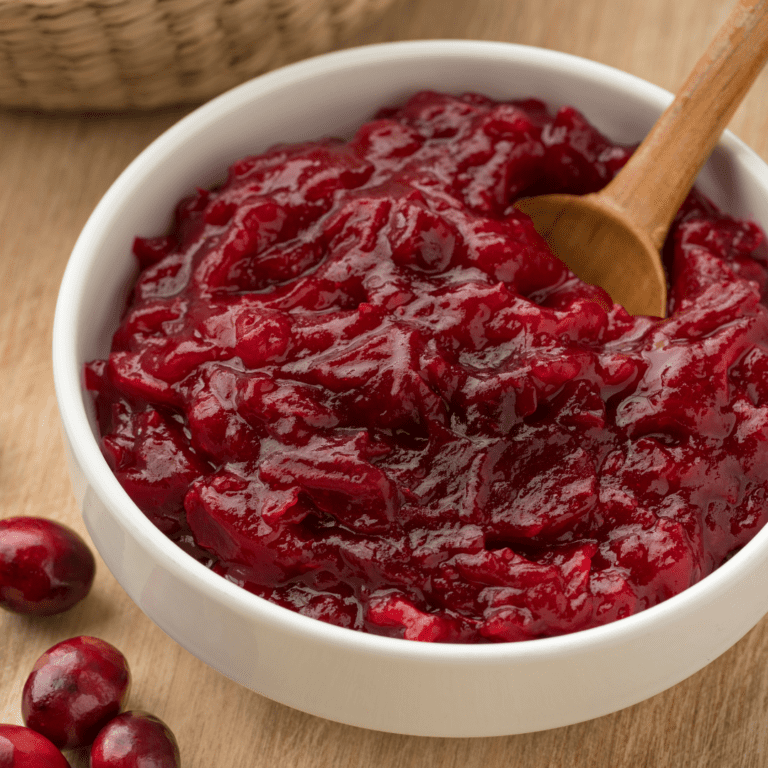
Baby-Friendly Cranberry Sauce
Equipment
- 1 saucepan
- 1 potato masher or blender
Ingredients
- 2 tbsps maple syrup
- 2 cups pineapple (canned, fresh, or frozen)
- 4 cups frozen cranberries (or fresh)
- 1 apple (diced)
Instructions
- Combine pineapple and cranberries in a saucepan and bring to a boil. Cook until they burst and soften, about 20 to 25 minutes.
- Add apple and maple syrup and cook for another 15 minutes.
- Mash with a potato masher or blend for a smooth consistency. Let cool before serving. Enjoy!
Notes
Was this helpful? Pin it to save for future holiday dinners!
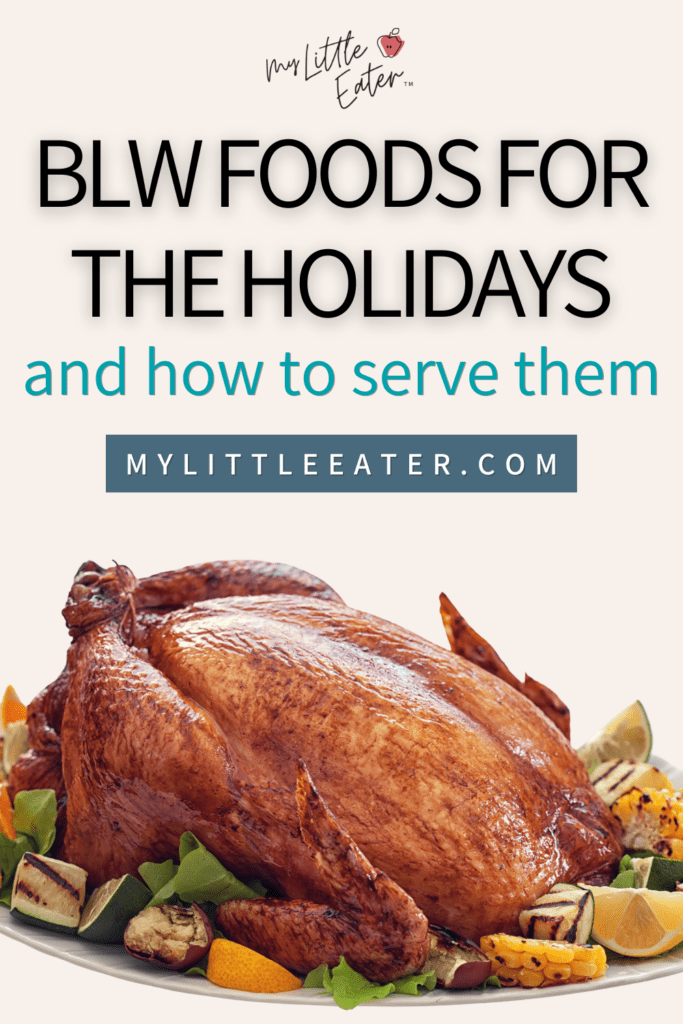

ABOUT THE AUTHOR
EDWENA KENNEDY, RD
Founder and lead Registered Pediatric Dietitian at My Little Eater Inc., creator of The Texture Timeline™, and mom of two picky-turned-adventurous eaters.

ABOUT THE AUTHOR
EDWENA KENNEDY, RD
Founder and lead Registered Pediatric Dietitian at My Little Eater Inc., creator of The Texture Timeline™, and mom of two picky-turned-adventurous eaters.
 1 day only sale! 20% off with code FLASH20 at checkout
1 day only sale! 20% off with code FLASH20 at checkout 

